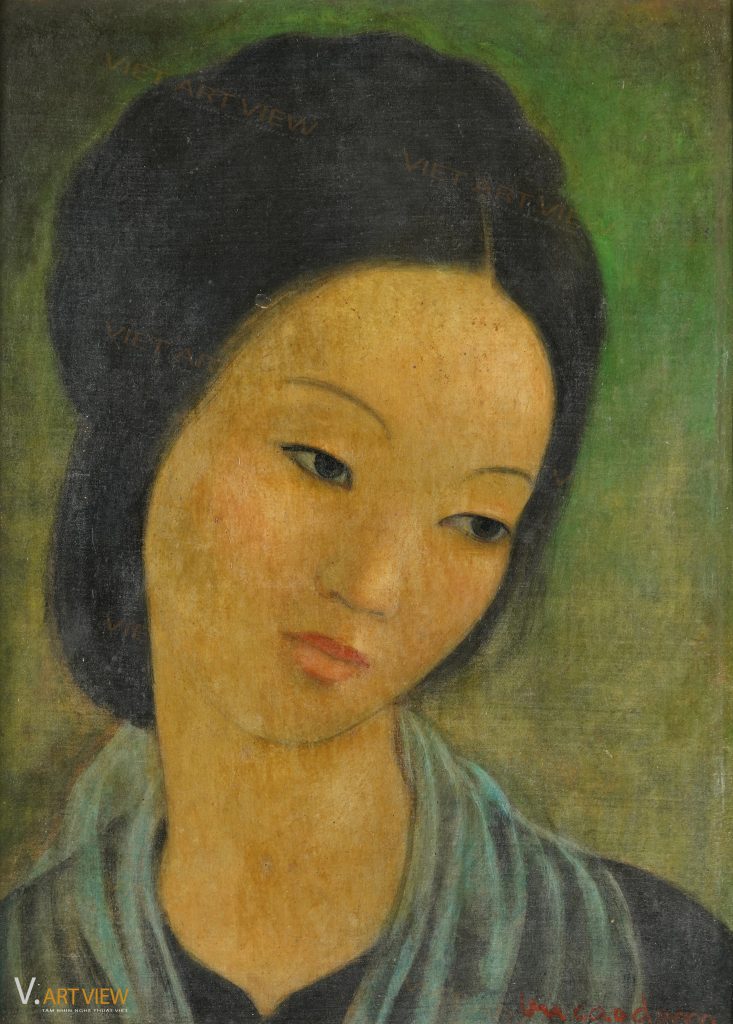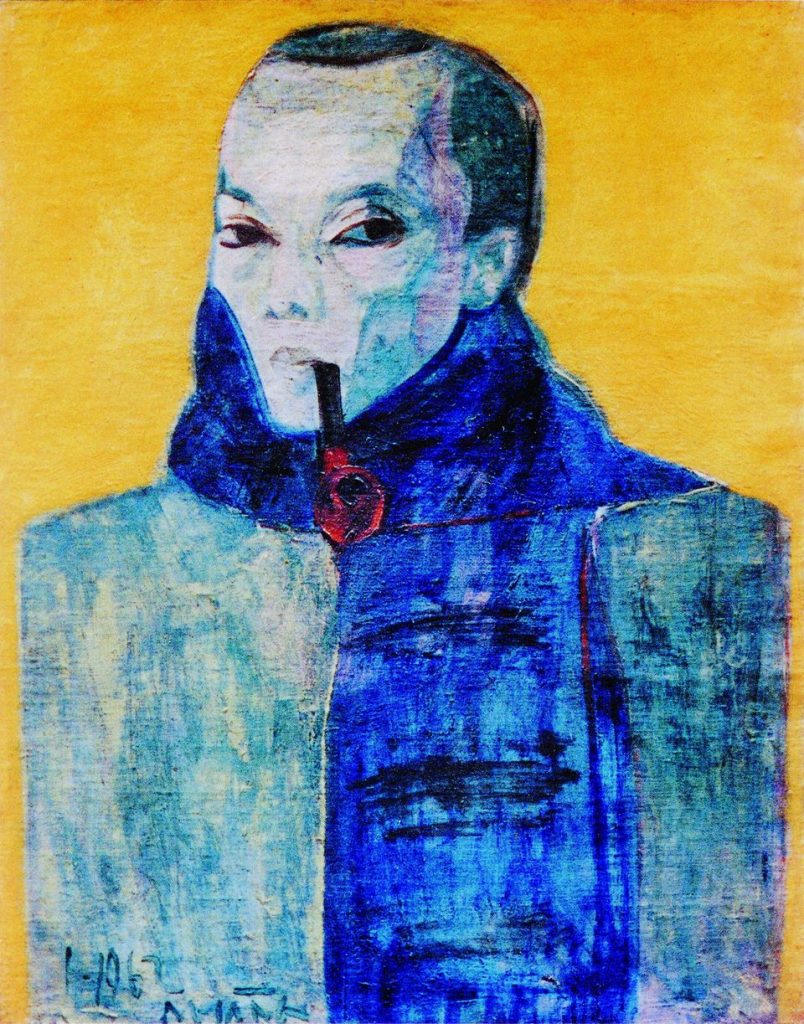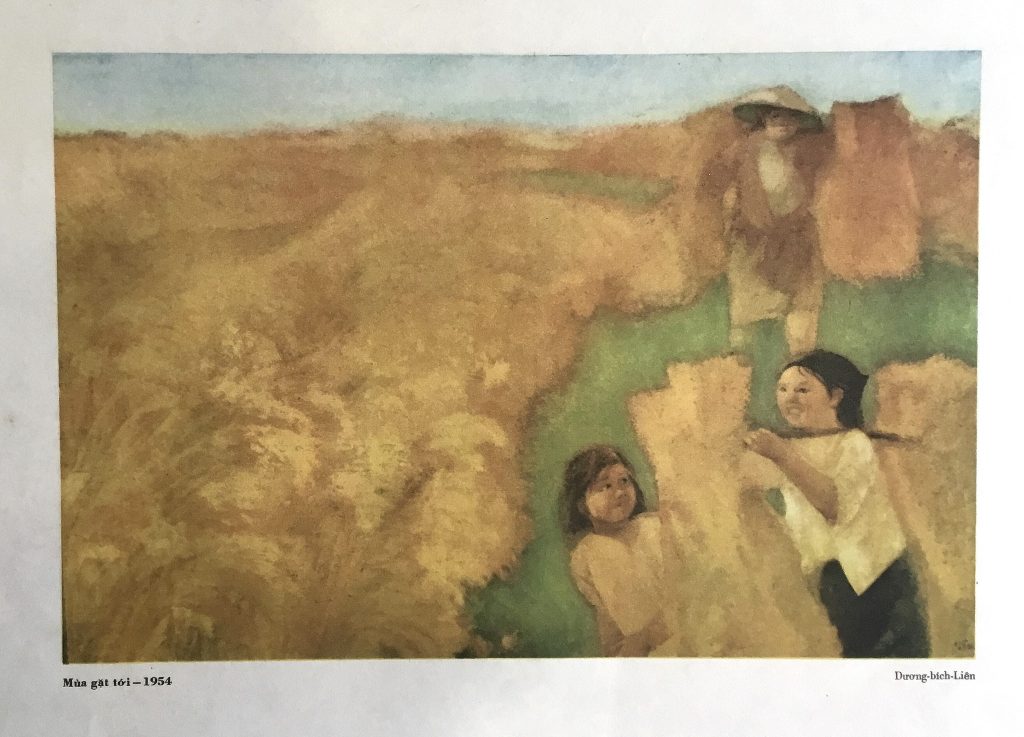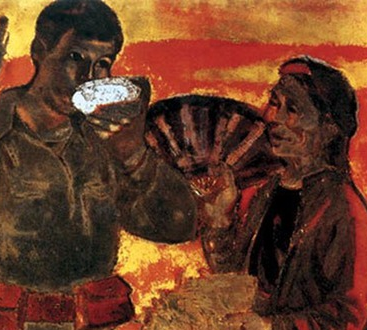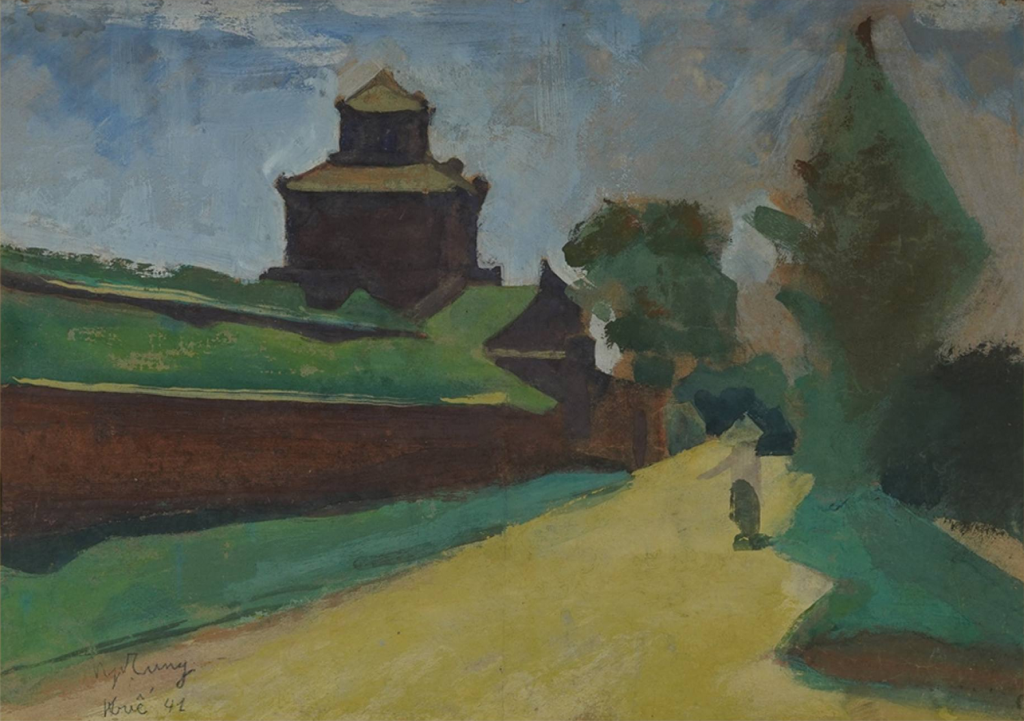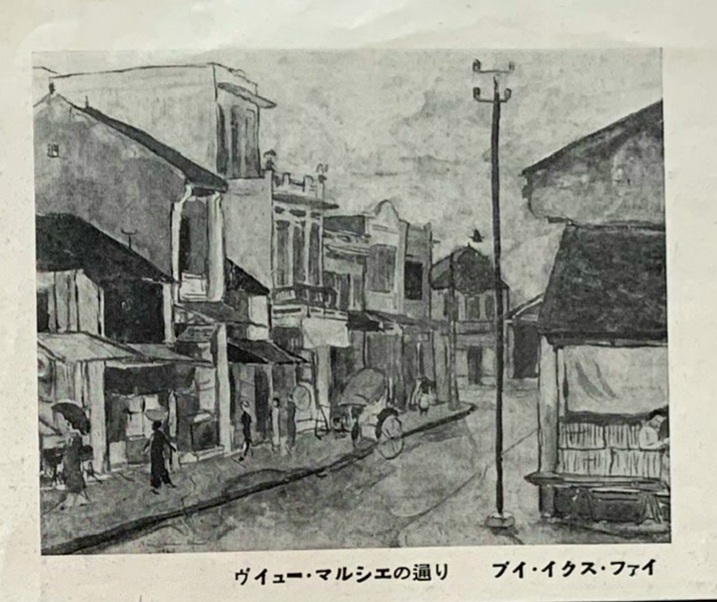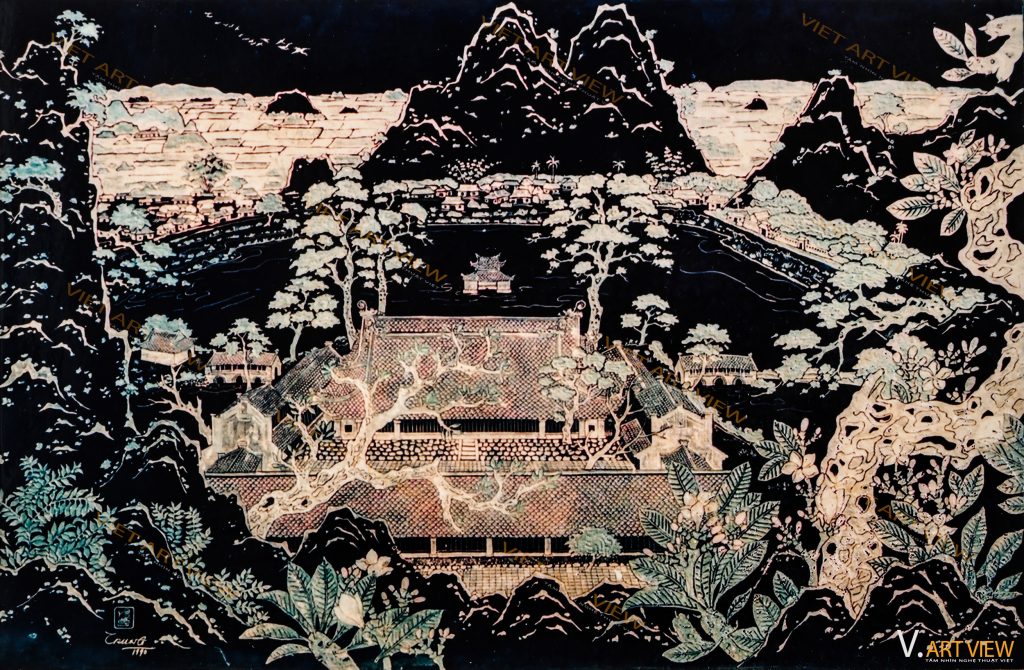
Cong Van Trung (1907 – 2004). View of Sai Son. 1990. Lacquer engraving. 90×140 cm.
Artist Cong Van Trung was born into a Confucian family in Tay Ho, Hanoi. He graduated from Indochina Fine Arts College, 1st class (1925 – 1930) with painters Le Van De, Nguyen Phan Chanh, Mai Trung Thu, Le Pho and Georges Khanh (sculptor).
Right from the early days of the introduction to fine art, Cong Van Trung had directed his affection towards the art of tradition. In the days of painting outdoors, when his classmates eagerly dived into the Impressive, Romantic color palette, the fresh and joyful colors of natural light constantly changed, he quietly read the delicate carvings on the old relics of the ancestors. The classic drawing lessons of the school helped him acquire a talent for recording and observing when working in front of nature and at each monument.
After graduating from school, he collaborated with the Institute of Viễn Đông Bác Cổ [Institute of the Ancient Far East Erudite] a French organization that was present in Hanoi in the early twentieth century, representing the first cultural contact with the West. The French-Vietnamese cultural interference in fine arts started from the tendency towards the East of world art after the Post-Impressionist movement. Vietnamese fine art gradually left the tradition of anonymous symbolic art, gradually approaching the strict laws of the West through perspective and rational aesthetics. The concept of artist replaced unknown artisan of previous centuries such as artisans that made ceramic, folk painting, Buddha statue casting, temple building…
Cong Van Trung was a different case. At the Institute of the Far East, with his colleagues were historians Tran Van Giap, Nguyen Van To, he went to each monument to identify the brave ancient architecture of the Vietnamese nation as well as the delicate, meticulous carving, a form of graphic art lighted from time immemorial.
The structure that combines the perspective drawing technique and the “monoline – plane” visualization method had been shown by him on many architectural works of ancient temples. With full awareness of graphic language expression from simplicity to asceticism without waiting for visual solutions, he is the only painter of the modern period to find the distinctive features of Buddhist Zen art, free from the generous flowery beauty in the city to find the unconscious blank to create a simple space between souls and things.
Like Bui Xuan Phai of modern times, born in Hanoi, Cong Van Trung used to wander around and make many painting of old quarter, recording his memories of Hanoi with which his whole life he and his family were attached. Therefore, his works that remain until now are an old Hanoi with old relics dyed with time, toilsome suburbs and a ruined Hanoi after 60 days and nights of smoke and fire, Die for The Country to Live in 1946 and early 1947. He walked in the ruins, his heart throbbing, recording the scene of Hanoi at every street corner: Hang Cuoc Street, Lo Ren Street, Hang Dong Street, Hang Sat Street (Collection of Vietnamese Fine Arts Museum) with a simple pencil, but the landscape seems to emerge on each painful look.
Later, he worked at the Department of Museum Conservation for Historical Relics, a job that was very suitable for the quality of a researcher working with the history of ancient art in Vietnam. As an artist, Cong Van Trung’s silk paintings and wood engraving lacquer paintings were still ancient architecture themes: ‘The Great Tree of Thay Pagoda’, ‘Visiting historical sites’ (silk painting 1982). The wood engraving lacquer painting ‘View of Sai Son’ (1990) won the first prize at the 1990 National Fine Arts Exhibition. Research works on Vietnamese ancient architecture and folk engravings have recognized artist Cong Van Trung as a person of old memories from a resounding time.
Attached to scholars who studied ancient art in the architecture of village pagodas and communal houses, which flourished in the early 17th century under Le Trung Hung’s reign, he returned to Doai village, Duong Lam to record the memory of Indochina Fine Art College when the school moved there. Everytime contacted with ancient pagodas haunted him in the content of his works on wood engraving lacquer medium. The work ‘View of Sai Son’ dimension 90×140 cm is a success in this material.
Vietnamese lacquer material was very decorative, but in the 30s of the twentieth century, the innovation of painter Nguyen Gia Tri brought lacquer from fine craft to fine art, to create paintings with different schools of modern art.
The decorativeness was even more evident in wood engraving lacquer, also known as lacquer engraving.
Artist Cong Van Trung chose lacquer engraving to perform the work ‘View of Sai Son’, depicting the Thay pagoda in the Later Le Dynasty. In the picture is an image of an ancient pagoda hidden behind ancient trees. The distribution of different large and small strokes has described the shape and the graphic space.
Cong Van Trung believed that the color of lacquer engraving painting is the line engraved under the black or vermilion board, the black color of the board used in the work ‘View of Sai Son’ also participates in shaping and coloring, plus a few delicate green color of oil material on the engraved leaves of ancient trees. With a composition spread out to show many layers of the pagoda’s architecture at the same time, the lines on the work are the tiled roof, the sinewy tree stump, the foliage covered to soften the architectural lines of the water house and the market bridge. In the distance is the Sai Son hamlet on the Land of Doai where the people are attached to their homeland.
Lacquer engraving and silk paintings were the main materials of artist Cong Van Trung throughout his life. In which, part of his success is the lacquer engraving paintings with the theme of ancient architecture. Cong Van Trung had expanded the language of the engravings on the boards to show the lines sometimes sparse, sometimes dense, sometimes airy. Ancient architecture in harmony with shape refers to lines that are sometimes straight, sometimes curved, and sometimes wound to create a sense of structure and strictness of Vietnamese ancient architecture.
A motif that is always present on the lacquer engraving and silk paintings of Cong Van Trung is the image of a giant tree with a rough body and spindly branches. This motif suggests a lot to the artist when engraving zigzag lines, removing parts of the board to reveal delicate shaping lines.
If we consider the lacquer engraving painting on the board of black paint, vermilion paint, the shapes appear as a meticulous graphic art with sharp lines such as thin, precise handwriting, conveying a content that connotes a close reality, viewers will feel that connection when standing in front of the works of the old painter Cong Van Trung, who had contributed a significant part to a distinctive genre in the visual arts of Vietnam.
Photo taken by Photographer Le Vuong
Written by Researcher Nguyen Hai Yen
Copyrights belong to Viet Art View


